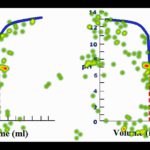Research Keywords
representational competence, chemistry education, multiple representations, eye tracking, perceptual learning
Project description
Chemical entities (such as molecules, atoms), phenomena (e. g. chemical reactions), and concepts (such as the periodic table, valency) are often not available to direct perception and action. Access to these entities, phenomena and concepts is facilitated by different external representations (such as symbols – molecular formulae, chemical equations, graphs, etc.). Representational competence (RC), one’s ability to ‘integrate’ multiple external representations into a coherent understanding/imagination of worldly entities and phenomena, is critical to chemistry learning. This project aims to (a) characterise RC in chemistry in terms of behavioural (e. g. eye movements, gaze) and cognitive/brain mechanisms, (b) understand how RC in chemistry develops among learners, and (c) how can student RC be improved. People with different levels of exposure to chemistry (e. g. undergrads, professors, etc.) solve a set of standard tasks (e. g. categorisation of chemical representations such as chemical equations, temperature-concentration graphs, molecular animations, etc.) and respond to a set of questions around those tasks while I track their actions with a camcorder and eyes with an eye tracker.
Analysis of performance on the tasks reveals an interesting relationship between the overall extent of exposure to chemistry and RC, suggesting a pattern of RC development. Intriguingly, the groups also differ significantly from each other across several gaze (eye movement) related parameters. For instance, expert participants (high RC) tended to exhibit stable patterns of gaze in contrast to more novice participants (low RC) whose eye movements were chaotic. The overall results suggest that training/experience in chemistry somehow fine-tuned the perceptual-sensorimotor system of the participants helping in faster and more efficient information pickup.
Contributors
Prajakt Pande (PhD thesis), Prateek Shah & Dibyanshee Mishra (statistical analysis), Sanjay Chandrasekharan (thesis advisor)
Selected Publications
- Pande, P., Shah, P. & Chandrasekharan, S. (2015). How do experts and novices navigate chemistry representations – an eye tracking investigation, In S. Chandrasekharan, S. Murthy, G. Banarjee, & A. Muralidhar (Eds.), Proceedings of EPISTEME-6, 102-109, HBCSE-TIFR, Mumbai, India.
- Pande, P., & Chandrasekharan, S. (2014) Categorization Of Multiple External Representations By Chemistry Undergrads: An Eye-Tracking Study, In Y.-J. Lee, N. T-L. Lim, K. S. Tan, H. E. Chu, P. Y. Lim, Y. H. Lim, & I. Tan (Eds.), Proceedings of the International Science Education Conference 2014, 1393-1415. NIE-Singapore.
- Pande, P., & Chandrasekharan, S. (2014) Integration of multiple external representations in chemistry: a requirements gathering study, In C.-C. Liu, Y. T. Wu, T. Supnithi, T. Kojiri, H. Ogata, S. C. Kong & A. Kashihara (Eds.). Proceedings of the 22nd International Conference on Computers in Education, 732-737. Japan: Asia-Pacific Society for Computers in Education.




